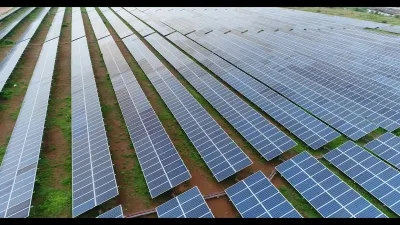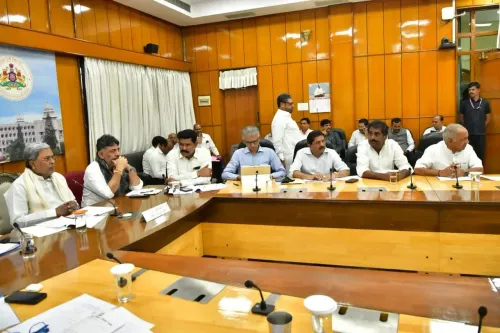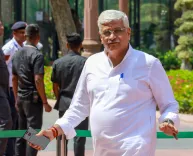Has SECI Surpassed 60 GW in Power Sale Agreements for Green Energy?

Synopsis
Key Takeaways
- SECI has executed over 60 GW of renewable energy power sale agreements.
- Long-term agreements provide financial security for developers.
- India aims for 500 GW of renewable energy capacity by 2030.
- Solar energy capacity soared from 2.82 GW in 2014 to 105.65 GW in 2023.
- Wind energy capacity more than doubled from 21 GW to 51 GW.
New Delhi, July 1 (NationPress) The Solar Energy Corporation of India Limited (SECI) has reached an important milestone by finalizing more than 60 gigawatts (GW) of power sale agreements dedicated to renewable energy capacity. This accomplishment marks a crucial advancement in the nation’s journey towards a clean and sustainable energy future, as highlighted in an official statement released on Tuesday.
The agreements encompass a wide array of solar, wind, and hybrid energy projects, collectively forming a significant portion of India’s expanding renewable energy capacity.
As a Navratna public sector enterprise, the SECI ensures the long-term purchase of generated power, thereby providing financial security to developers and investors while showcasing the feasibility of renewable energy initiatives throughout the country.
These long-term agreements are vital in maximizing the potential of India’s renewable energy sector. By securing off-take for renewable power, the SECI reinforces the renewable energy market, drawing in developers and financial stakeholders, while facilitating capital flow for India’s low-carbon economy.
SECI Chairman and Managing Director Santosh Kumar Sarangi stated, "The signing of 60 GW worth of Power Sale Agreements within a mere fourteen years since our inception is a defining moment. The SECI remains committed to ensuring that India meets its ambitious clean energy goals, and we take pride in contributing to the nation’s transition towards a sustainable, low-carbon future."
Future endeavors will emphasize innovative energy storage solutions, enhancing the renewable energy supply chain, promoting the production of green hydrogen and green ammonia, along with pioneering power supply models. These initiatives are expected to accelerate the renewable energy transition and bolster India’s climate commitments, he added.
Prime Minister Narendra Modi has set an ambitious target of achieving 500 GW of renewable energy capacity by 2030 as part of the country's strategy to mitigate its carbon footprint in combating climate change.
The solar energy sector, which is a leading force in renewable energy, has experienced remarkable growth in India over the past 11 years, surging from a mere 2.82 GW in 2014 to an impressive 105.65 GW as of March 31 this year, according to official statistics.
Meanwhile, India’s wind energy capacity has more than doubled, reaching 51 GW from 21 GW in 2014. Wind energy also saw consistent growth during 2024-25, with 4.15 GW of new capacity added, compared to 3.25 GW in FY 2023–24.
Bioenergy installations have achieved a total capacity of 11.58 GW, including 0.53 GW from off-grid and waste-to-energy projects.
Additionally, small hydro power projects have attained a capacity of 5.10 GW, with another 0.44 GW currently under development. These sectors continue to enhance the solar and wind segments, contributing to the decentralized and diversified nature of India’s energy landscape.









